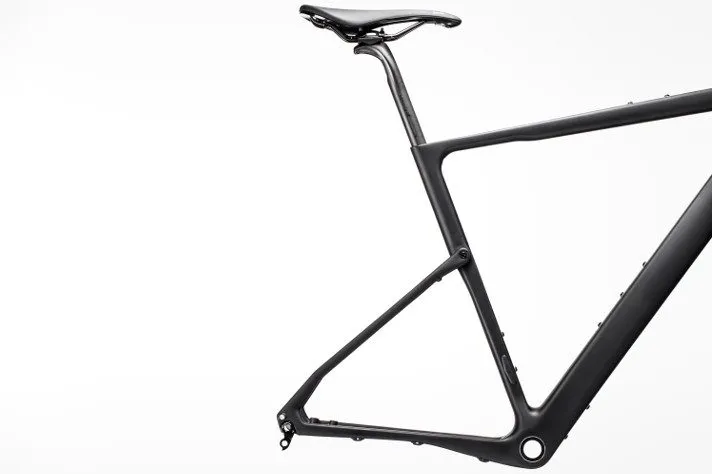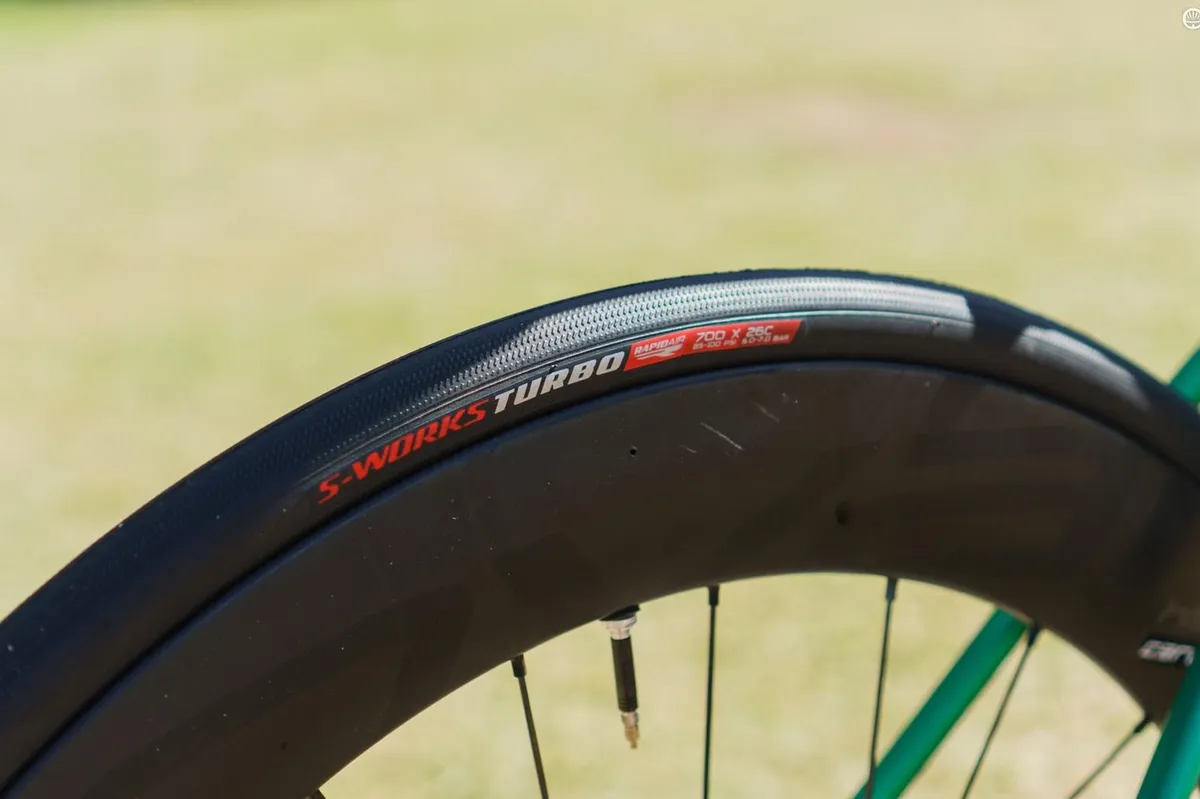Cycling tech often trickles down from the top-end of the sport, which makes the Tour de France the general public’s best glimpse at the bike tech they may be riding tomorrow.
Whether it’s a time-trial superbike or something as simple as a super aero zipless jersey, much innovation seen at Le Tour eventually makes its way down to the cycling proletariat.
But what about the tech we haven’t seen yet? What crazy new innovations will we see in future editions of the race?
Drawing inspiration from kit seen at this year’s Tour and looking to the fringes of cycling tech, I’ve gazed into the (ceramic) mystic ball of the cycling industry to give you my top three predictions for the Tour tech of tomorrow.
- 9 of the best Tour de France riders to follow on Strava
- Tour de France 2019 bikes, gear and tech
- Best road bikes under £1,000
Suspension on road bikes is the future

I can’t imagine how many times people have made this exact point, but you would never consider buying a motorbike or a car without suspension. Why is it then that road bicycles, which travel on the exact same terrain as these vehicles, remain unsprung?
To be clear, when I talk about suspension on road bikes, I’m not suggesting that Marzocchi Super Monster T-like levels of bounce will be making its way onto your dainty-tyred go-fast pew-pew wagon.

To my mind, I imagine suspension on road bikes of the future taking the form of something similar to that seen on the Cannondale Topstone carbon gravel bike.
This recently announced bike uses a shockless rear-suspension system that relies on the whole rear triangle acting as a leaf spring to provide up to 30mm of rear-wheel travel.
While less sophisticated than any modern mountain bike suspension layout, this setup is far lighter and less complex. By all accounts, it also still adds a genuinely useful degree of comfort and control in rough terrain. Why couldn’t a similar concept be ported to the road?
Pinarello’s Dogma FS is another key example. This bike uses a coil spring and a hydraulic damping circuit in the fork that runs in conjunction with an electronically lockable elastomer in the rear to provide fully-automated suspension. Our own Oli Woodman rode the previous generation of this bike and found the whole package to be very impressive.
Assuming it works and could be proven to be faster (not only in rough terrain), what’s stopping further development of suspension for road bikes?
Weight is, of course, the spanner in the works here. It’s inevitable that adding suspension to a road bike is going to make it heavier.
However, given we’re still adding lead weights to some bikes to ensure they’re above the 6.8kg UCI limit and that pros are also happy to ride bikes above this limit in the name of aero performance, is it that far-fetched to think that an ultralight suspension system could be seen on the bike of tomorrow?
Throwing the shackles of current thinking out of the window, why not imagine a future where we all ride road bikes that have a ridiculously light magnetorheological-damped suspension system that is powered by a dynamo in your jockey wheels, with the whole thing somehow utilising blockchain technology (because everything in the future is set to be built on blockchain technology).
Jesting aside, this is one I’m almost willing to put money on. Watch this space.
Everyone will be on tubeless and there is nothing you can do about it

Tubeless tyres have made a surprise appearance during this year’s edition of the Tour de France — and not just during a time trial.
As reported by CyclingTips, tubeless tech has made the jump onto traditional road stages at the 2019 Tour, with the entire UAE-Emirates team running 25mm Vittoria Corsa tubeless tyres during stage one.
Why switch to tubeless in the first place when tubulars have worked for so long? It all comes down to speed. Tubeless tyres have been proven to have measurably lower rolling resistance than tubulars (Bicycle Rolling Resistance has extensive comparative reviews between all different types of tyres and is well worth looking into).
This has been common knowledge for some time and tubeless tyres have been gaining ground against the clock in the time trialling world.
Outside of time trialling, tubeless technology has also seen success under Alexander Kristoff at this year’s Gent-Wevelgem cobbled classic, though the Norwegian later punctured at Paris-Roubaix on a set of 25mm Vittoria Corsa Graphene 2.0 tubeless tyres.

Peter Sagan also teased us with the suggestion he’d run tubeless tyres (on an aluminium bike no less!) on the opening stage of this year’s Tour Down Under, though he eventually wussed out and went for tubulars on the day.
The impending announcement of an industry-wide standard for road tubeless tyres may also help usher in their arrival.
Oddly, of all of the things in the list, this is the one I am most skeptical about. Tubular tyres still offer significant safety advantages in the event of a puncture because they are less likely to completely blow out and can still (just about) be ridden even if a tyre punctures.
Nonetheless, speed trumps almost everything else in the pursuit of a Grand Tour win, so if tubeless tyres offer a significant advantage over tubulars, it’s entirely possible their use will become more widespread.
Besides, it’s not as if the peloton cares about safety anyway; half of them are still using dang rim brakes (I’M KIDDING).
Aero really, really is everything

Power meters are now ubiquitous in pro racing and, as it currently stands, I honestly can’t imagine that someone would be able to win a Grand Tour without one — being able to maintain and monitor efforts within specific zones is vital to ensuring a rider is performing at their very best.
Likewise, wind tunnel time is pretty much mandatory for anyone who takes their racing (particularly time trialling) seriously.
With this in mind, I can foresee devices that can measure and estimate live aero data becoming the norm at the top-end of the sport.
This isn’t as far fetched as it may sound. The PowerPod from Velocomp, which measures wind speed to estimate power data, has been around for a very long time.
Taking this idea further, the Konect by Notio uses a pitot tube, similar to that used on the front of a plane, to actually estimate live CdA (coefficient of aerodynamic drag).
- A wind tunnel on your handlebars: how real-time aero measurement could be the next big thing
- Notio Konect provides all your aero data without a wind tunnel
With such a device at their disposal, riders would be able to adjust their position in reaction to real-time data, potentially offering a significant performance advantage mid-race.

Such a device also opens up the possibility of a world where a directeur sportif can chide slouching riders with data-driven confidence from the side of the team car — pantomime meets the peloton! One can dream.
I should add that when discussing the entries for this list, some on the BikeRadar team reckoned there was a high chance that the UCI would move to outlaw any device like this being used in competition. Given the body has recently moved to ban socks above a certain length, this doesn’t sound that unreasonable.
Don’t get your chamois in a twist

As an aside, even if you hate the idea of any of these ideas becoming a reality, remember that in 2019 it is still perfectly possible to build a thoroughly retro-grouchy classic steel road bike with rim brakes. I know this because I have just built one.
As my esteemed colleague, Matthew Allen, once said: “a manufacturer bringing new products to market doesn’t somehow invalidate the ones you already own” — faster, lighter or more aero doesn’t necessarily mean better for you.
Trust me, just because it exists, doesn’t mean ‘the man’ is going to make you ride a full squish road bike with more sensors than a jet fighter and — horror of horrors — tubeless tyres.
What do you think? Am I a tech-obsessed industry-insider that can’t see that all of this progress is eroding the purity of cycling, or should we embrace the future our Di2 overlords have in store for us? As always, leave your thoughts in the comments.

